
Annual Forbs Around Las Vegas, Vegetation Around Las Vegas
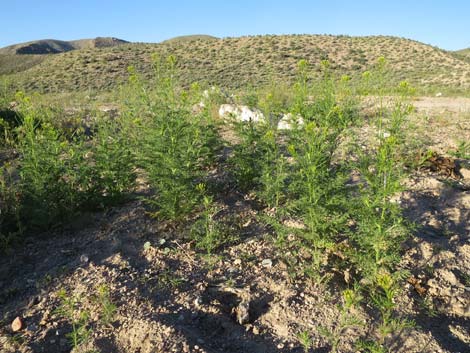 Typical growth form on roadside soils |
General: Flix Weed (Descurainia sophia) is an annual forb with a single flowering stalk (can branch above) and tiny, yellow, 4-petaled flowers. The leaves are two- or three-times pinnate (highly dissected) with many pairs of lateral lobes, looking much like a fern leaf. The plant dies after it flowers, leaving open, upright stalks that are highly flammable. Flix Weed is an uncommon component of disturbed desert vegetation communities. Around Las Vegas, look for this species in town and in disturbed roadsides and open fields. This non-native species is a fairly recent addition to our local flora. Family: Mustard (Brassicaceae). Other Names: flixweed, herb sophia, pinnate tansymustard, fine-leaved tansymustard, tansy mustard, Sisymbrium sophia, Sophia sophia. Plant Form: Begins as a basal rosette that withers when the single flowering stalk begins to grow. |
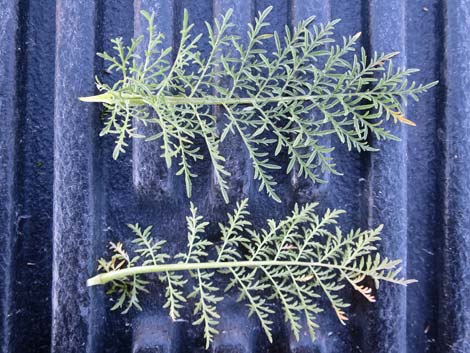 Older cauline leaves are two- or three-times pinnate |
Height: To about 3 feet. Stems: Single flowering stalk that may branch in the upper half. Stems glabrous or sparsely hairy; without stiff hairs. Leaves: Basal leaves are a low mound of 2-3 pinnate leaves that wither as the flowering stalks begin to grow. Cauline leaves are 2-3 pinnate (looking much like a fern leaf). Hairy throughout, but not stiff hairy or prickly hairy. Flowers: Blooms during spring and summer. Flowers clustered at the top of the flower stalks; petals 4, yellow. Petals elongate and scoop-shaped. Fruit: Glabrous, linear, not adpressed to the stem; pedicel widely spreading to ascending. Long (to 1.5 inches), narrow pod (cylindrical silique), remains green when ripe, spreading from stem. |
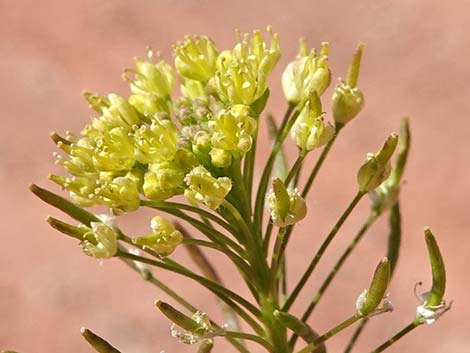 Flowers at the top, yellow; fruit long, cylindrical, spreading |
Seeds: Form in one row per chamber, 10-20 per pod. Tiny (1-mm wide), oblong. Orange-brown. Sticky when wet. Habitat: Roadsides, picnic areas, disturbed sites; spreading into undisturbed desert sites. Elevation: To about 9,000 feet. Distribution: North America. Native to Eurasia. Comments: This species is similar to Black Mustard and Sahara Mustard., but with a single flowering stalk and dissected leaves. Listed as a noxious weed in 46 states. Toxic to livestock when eaten in large quantities. This genus is taxonomically difficult because most characters are highly variable. |
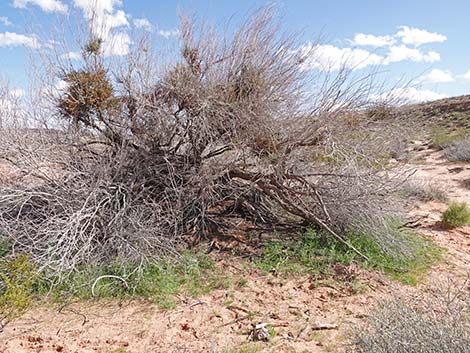 |
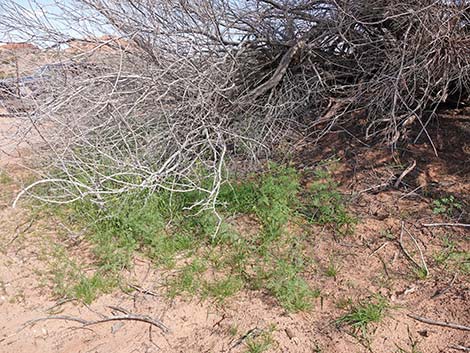 |
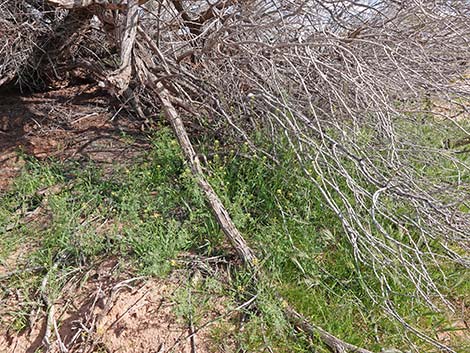 |
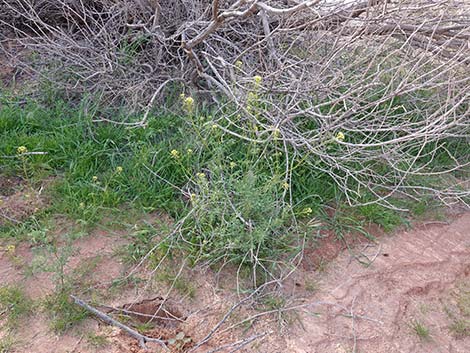 |
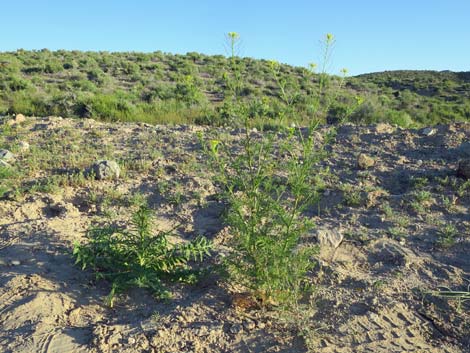 Typical growth form (growing next to London Rocket) |
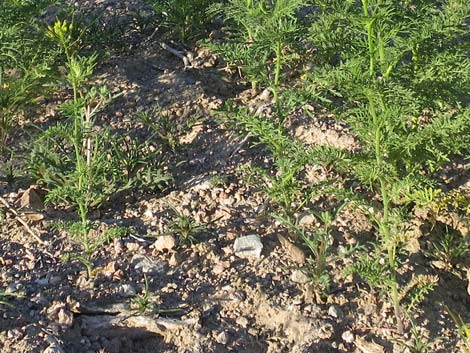 Flowering stalks without basal leaves, single |
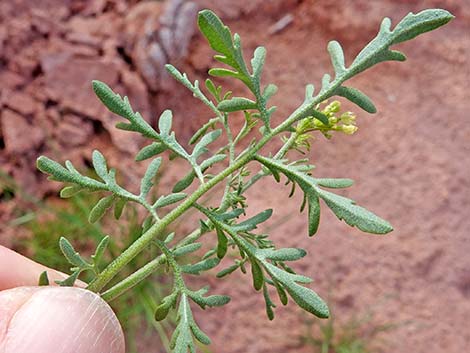 |
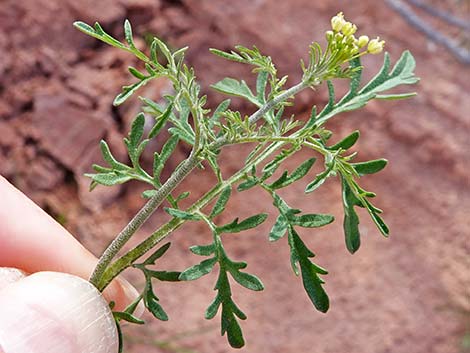 |
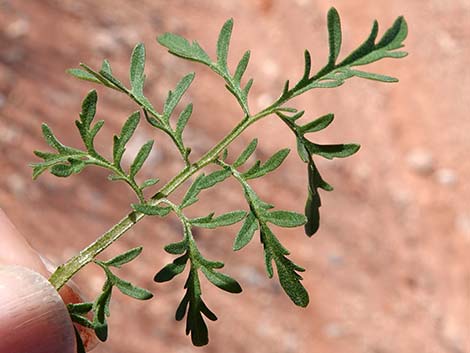 Young cauline leaves are two-times pinnate |
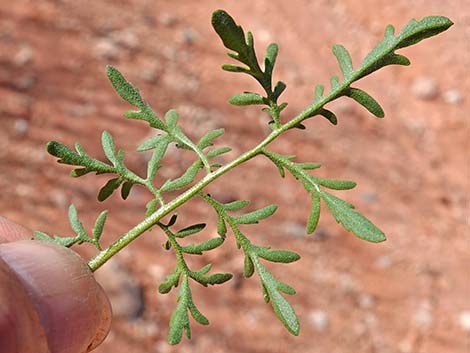 Young cauline leaves are two-times pinnate |
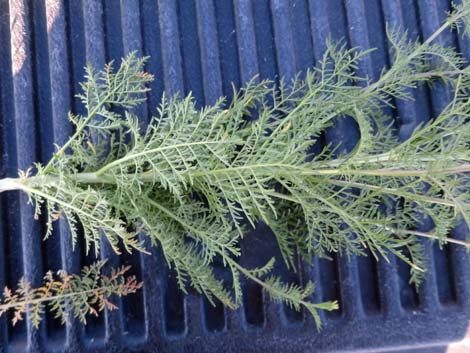 Dissected leaves grow along stalk and branches |
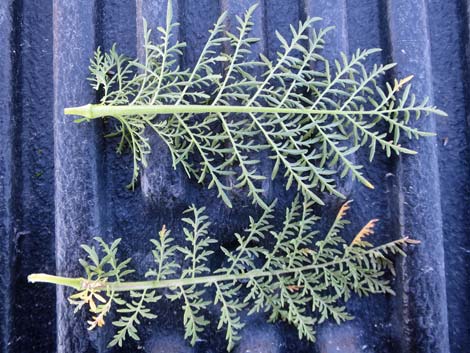 Older cauline leaves 2-3 pinnate (looking much like a fern leaf) |
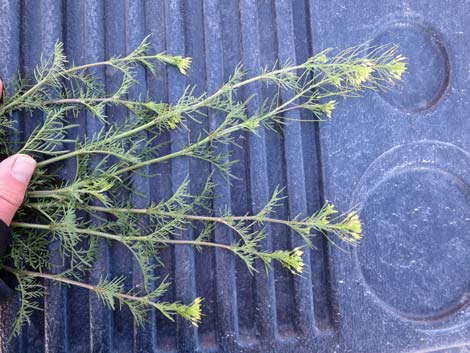 Flowing stalk branches distally; flowers grow at tips |
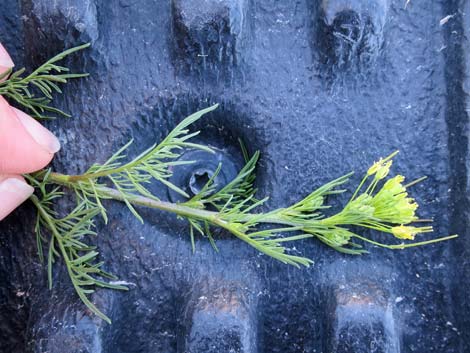 Flowers grow at tips of branches |
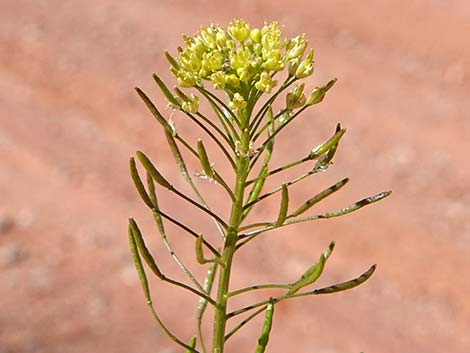 Flowers and fruits radiate from the stem |
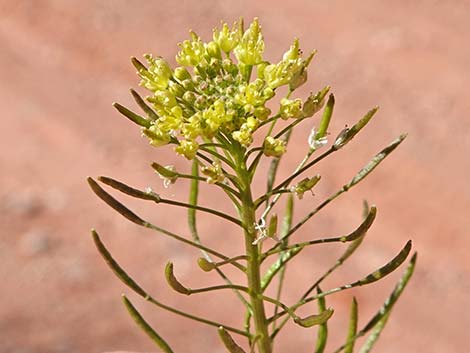 Flowers and fruits radiate from the stem |
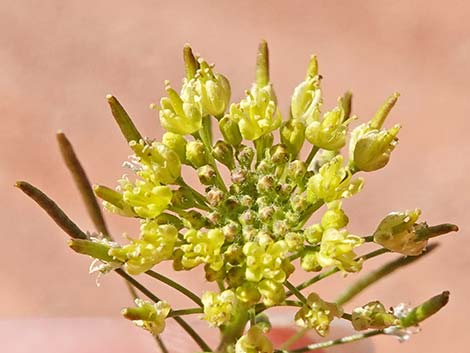 Fresh yellow flowers and developing elongate fruits |
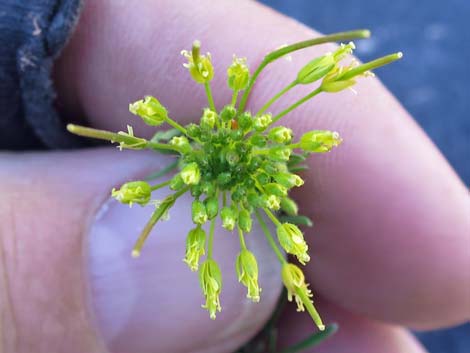 Flowers and fruits radiate from the stem |
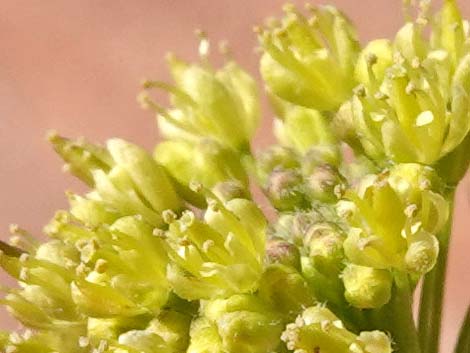 Flowers with 4, yellow, scoop-shaped petals |
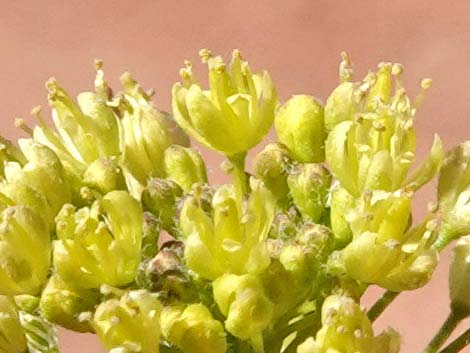 Flowers with 4, yellow, scoop-shaped petals |
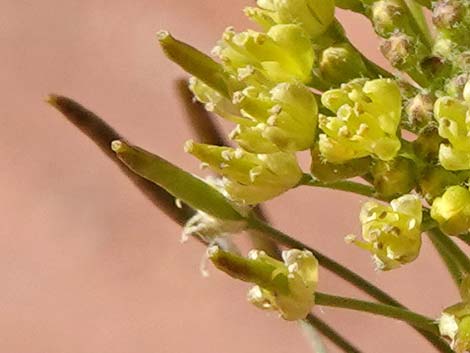 Developing fruits and fresh flowers |
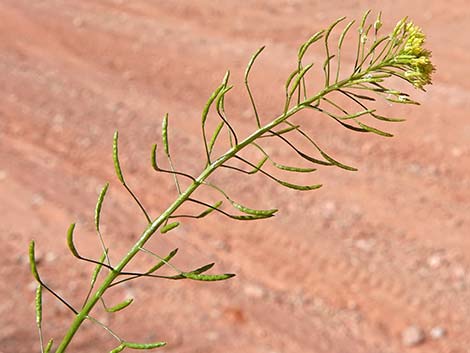 Ripe fruits glabrous, linear, not adpressed to the stem |
Note: All distances, elevations, and other facts are approximate. Names generally follow the USDA database.
![]() ; Last updated 240616
; Last updated 240616
| All Annual Forbs | Plant Species Index | Glossary | Copyright, Conditions, Disclaimer | Home |